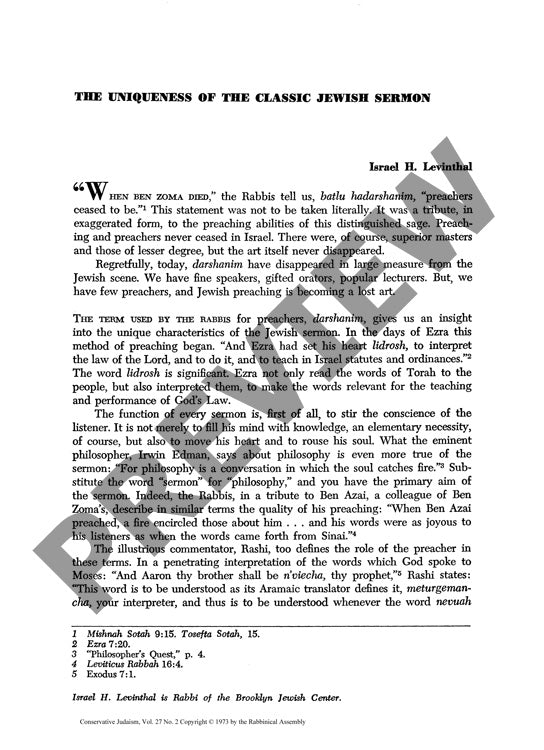The Uniqueness of the Classic Jewish Ser
Couldn't load pickup availability
The once-vibrant art of classical Jewish preaching stands at risk of extinction, despite its power to breathe new life into ancient texts and strengthen Jewish continuity. Through examination of primary sources including Midrash, Talmudic texts, and commentaries by Rashi and other classical authorities, a distinct portrait emerges of traditional Jewish homiletics (*darshan*) and its unique interpretive approach. From its origins with Ezra through rabbinic literature, authentic Jewish sermons have been distinguished by their reliance on *drash* (interpretation), drawing fresh insights (*chidush Torah*) from sacred texts while anchoring contemporary teachings in traditional sources. Central to this practice is the "Midrashic Eye" - the essential skill enabling preachers to perceive new meanings in ancient texts, thereby maintaining Torah as a living tradition. Modern rabbis have largely abandoned this classical approach, often wrongly blaming congregational disinterest rather than acknowledging shifts in preaching style. Historical analysis reveals that the disappearance of authentic Jewish preaching represents a significant loss to synagogue life, yet evidence suggests that properly executed classical Jewish sermons retain their capacity to engage congregants and restore the synagogue's central role in Jewish community life. This research advocates for reviving these traditional homiletic methods as vital tools for Jewish cultural preservation.

More Information
-
Physical Description
-
Publication Information
Published 1973
ISBN
-
Publication Credits
Israel Levinthal

